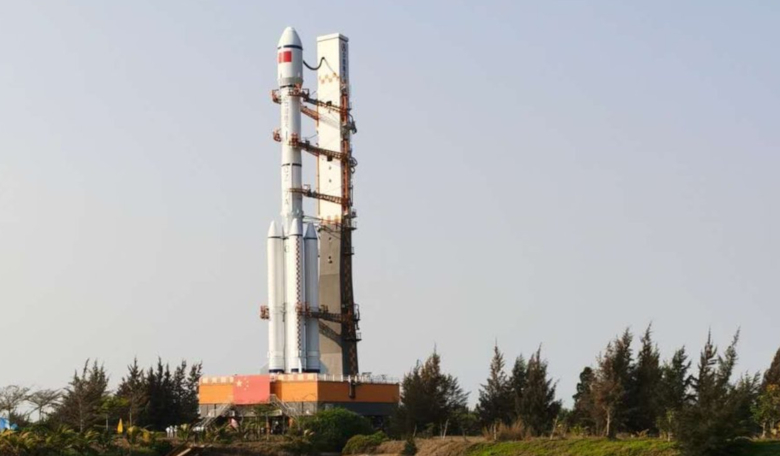The launch of China’s first new-generation Long March 7A, a rocket that without the addition of the new upper stage is designed to carry resupply ships to China’s planned space station, ended in failure on Monday, casting doubts over the country’s ambitious space missions planned for the rest of the year.
The 60.13 metre (197-foot) tall Long March 7A rocket, also known as the CZ-7A, encountered an “abnormality” shortly after lifting off at 13:34 GMT (9:34 a.m. EDT) from the Wenchang space center on Hainan Island, China’s southernmost launch site.
The rocket was expected to place a classified satellite named XJY 6 or ‘new technology verification satellite-6” into an elliptical, geostationary transfer orbit (GTO) but was unable to deliver the secret payload.
Details of the launch had already been shrouded in secrecy, according to SpaceNews, with neither timelines or airspace closure notices issued in advance.
Although China’s state-run Xinhua news agency announced that the first of China’s new medium-sized carrier rocket Long March 7A “suffered a failure Monday,” the manufactures of the rocket, the China Aerospace Science and Technology Corp., (CASC), made no statement following problems with the lift-off.
Little else has been disclosed about the incident including either the cause or nature of the failure, but footage of the launch published on China’s Twitter-like Weibo platform by distant spectators, showed what appeared to be a sudden flaring within a few minutes after take-off, suggesting an explosion during, or soon after, second-stage separation.
Xinhua said the cause of the malfunction will be investigated further by Chinese engineers.
The Long March 7A rocket is a new variant of China’s Long March 7 launcher, which differs from the base CZ-7 by the addition of a liquid hydrogen-liquid oxygen third stage.
China is moving away from older versions of its Long March vehicles which use toxic propellants and launch from inland spaceports deep within the country, to limit the prospect of any stages falling on inhabited areas.
Since the Long March 7A uses many of the same technologies and shares common engines with other rockets in the Long March family, the recent malfunction could impact on launches already planned including China’s first independent interplanetary mission to Mars in July.
It could also have repercussions for China’s space station plans as the two-stage Long March 7, that was used to launch the Tianzhou robotic cargo spacecraft, and will eventually become China's crew-rated launch vehicle, uses the same engines for its first and second stages (the YF-100 and YF-115 respectively) as the three-stage 7A variant.
The added hydrolox third stage on the 7A is adapted from Long March 3B rocket, China’s current workhorse for launches with geostationary satellites, to allow it to send payloads to GTO.
An upper stage problem could also see plans for the 7A as a potential replacement for the older generation 3B put on hold, until the issues with the rocket are resolved.











